The Internet and World Wide Web are a fantastic resource for finding and sharing information. The Web contains literally billions of web pages containing information about every topic imaginable.
However we need to take care when using the Internet to look for information, or to send information...
However we need to take care when using the Internet to look for information, or to send information...
Reliability of Information
The Internet and Web are not regulated - there is no organisation that controls who can create web pages or what those pages can contain. Anyone can create web pages and say anything they want to.
In many ways this is a good thing. It means that corrupt organisations or governments, who have always been able to hide details of their activities, are no longer able to do so. When bad things happen, people write about it on the Web and the world gets to know, and hopefully do something about it.
But it’s also a bad thing. It means that people or organisations can easily spread lies and hatred. There are thousands of websites containing bigoted viewpoints, and thousands more that are full of information that is biased, inaccurate, or just plain wrong.
So... how do you which web pages to believe, which information to trust?
In many ways this is a good thing. It means that corrupt organisations or governments, who have always been able to hide details of their activities, are no longer able to do so. When bad things happen, people write about it on the Web and the world gets to know, and hopefully do something about it.
But it’s also a bad thing. It means that people or organisations can easily spread lies and hatred. There are thousands of websites containing bigoted viewpoints, and thousands more that are full of information that is biased, inaccurate, or just plain wrong.
So... how do you which web pages to believe, which information to trust?
- Check several sources of information (go to lots of different websites). If they all say the same thing, it is likely to be true
- Stick to websites that belong to trusted organisations. If the website address ends in .gov.uk (the UK government site) it is more likely to be reliable than one like www.tomiscool.net
- Look at the spelling and grammar used. Reliable websites are usually checked for errors. Too many spelling errors mean it’s probably not to be trusted.

When you are using the Web to research your homework, do you just use the information on the first website you find?
If you do, you could be making a big mistake! How do you the information is correct? Why should you trust it?
Keep searching and see if other websites agree.
Always double-check the information; otherwise you’ll be getting ‘F’ grades instead of ‘A’ grades!
If you do, you could be making a big mistake! How do you the information is correct? Why should you trust it?
Keep searching and see if other websites agree.
Always double-check the information; otherwise you’ll be getting ‘F’ grades instead of ‘A’ grades!
Undesirable Information
In addition to the Web being full of websites with inaccurate information, there are also a huge number of websites that contain highly offensive, or illegal material.
Avoiding this type of material can be tricky. Many organisations such as schools, some governments (e.g. for religious reasons), and also many parents, make use of web page filtering software. This software attempts to prevent offensive and illegal material being accessed.
Even if filtering software is not installed on a computer, you can still take steps to help you avoid these types of sites:
Avoiding this type of material can be tricky. Many organisations such as schools, some governments (e.g. for religious reasons), and also many parents, make use of web page filtering software. This software attempts to prevent offensive and illegal material being accessed.
Even if filtering software is not installed on a computer, you can still take steps to help you avoid these types of sites:
- Use the 'safe search' feature on search engines such as Google.
- Don’t click the links that are shown in junk email (spam)
- Think carefully about the keywords that you use to search with.
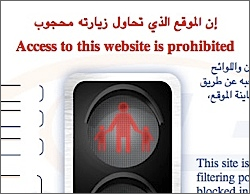
If you are researching the causes of over-heating in young chickens, searching for ‘hot chicks’ might not find the information that you are looking for!
Security of Data Transferred Using the Internet
As has been discussed already, you should always consider encrypting any sensitive or personal data that is sent or accessed over a public network such as The Internet.
Many websites, especially online shopping or online banking sites, require you to enter personal information, such as credit card numbers, social security IDs, etc. To make sure your data is safe, these websites use encryption - they are called secure websites.
You should always make sure that a website is secure before giving personal information...
Below are screenshots of two different web browsers, both showing a secure site. You can see the https://... URL and also the padlock icon:
Many websites, especially online shopping or online banking sites, require you to enter personal information, such as credit card numbers, social security IDs, etc. To make sure your data is safe, these websites use encryption - they are called secure websites.
You should always make sure that a website is secure before giving personal information...
- The website URL (address) should begin with https://... (normal, unsecure sites have addresses that start with http://...)
- Your web browser should show a closed padlock icon
Below are screenshots of two different web browsers, both showing a secure site. You can see the https://... URL and also the padlock icon:
The address of a web page is properly called a URL, which means Uniform Resource Locator.
URLs have several parts, e.g.
http://www.bbc.co.uk/schools
URLs have several parts, e.g.
http://www.bbc.co.uk/schools
- The first part is the protocol (language) to be used. In this case it is HTTP (HyperText Transmission Protocol). A secure website would use HTTPS (S = Secure)
- The next part is the name of the web server (the computer that gives out the web pages). In this case it is www.bbc.co.uk
- The final parts are the location and name of the web page on the web server. In this case it is schools
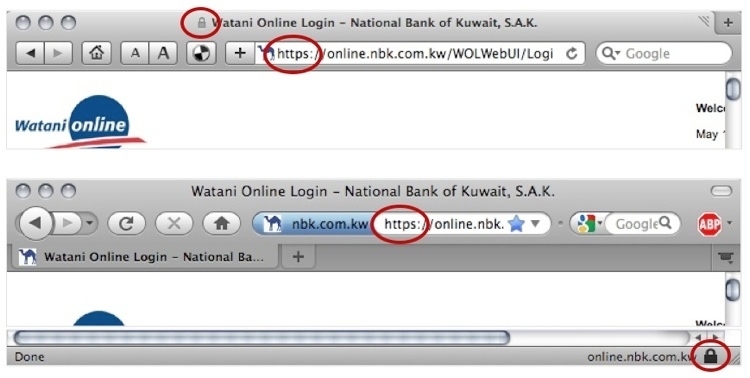
Phishing
There have always been dishonest people who try to con (take through deception) money from others. With the rise of the Internet, and e-mail in particular, these 'con-artists' have a new way to reach millions of potential victims.
'Phishing' is the nickname given to the sending of fraudulent e-mails that attempt to trick people into revealing details about their bank accounts, or other online accounts (e.g. Amazon, eBay, etc.)
The 'phishers' then use these bank details to login to the victim's bank account and take their money.
This is an example of a phishing e-mail...
'Phishing' is the nickname given to the sending of fraudulent e-mails that attempt to trick people into revealing details about their bank accounts, or other online accounts (e.g. Amazon, eBay, etc.)
The 'phishers' then use these bank details to login to the victim's bank account and take their money.
This is an example of a phishing e-mail...
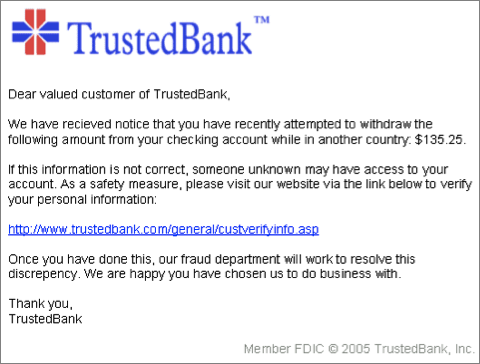
The e-mail looks very convincing. It even has the bank's logo. And it sounds urgent and scary... someone has tried to take money from our bank account! What should we do?!
This is exactly the scare tactic that phishers use to make people panic.
If you were to click the link, you would be taken to a fake bank website. Then if you were to enter your login details, these would be recorded by the phishers and used to empty your real bank account.
This is exactly the scare tactic that phishers use to make people panic.
If you were to click the link, you would be taken to a fake bank website. Then if you were to enter your login details, these would be recorded by the phishers and used to empty your real bank account.
The name 'phishing' comes from the fact that 'bait' (in the form of tempting e-mails) is used to lure victims into a trap, just like a fisherman uses bait to catch fish.
('Ph' instead of 'F' at the start of a word is common in computer hacker jargon)
('Ph' instead of 'F' at the start of a word is common in computer hacker jargon)
Phishing does not involve any hacking of a person's computer - it is a deception that tricks people into revealing secrets such as passwords. This type of deception is known as 'social engineering'.
It is very difficult to get accurate estimates as to how much money is lost by victims to phishing scams. Some estimates go as high as several billion dollars per year!
Don't become a victim of phishing!
If you receive an e-mail / SMS / instant message / VOIP message asking for your username / password it is almost certainly a phishing attempt.
NEVER give out your username / password in response to any messages of any kind!
If you receive an e-mail / SMS / instant message / VOIP message asking for your username / password it is almost certainly a phishing attempt.
NEVER give out your username / password in response to any messages of any kind!
Pharming
'Pharming' is similar to phishing, but instead of deceiving you (as phishing does), a pharming attack deceives your computer.
In a pharming attack, when you type in a completely genuine URL (e.g. for your online banking website), your computer is tricked into displaying a fake website (often a very accurate copy).
Then, when you try to login to the fake website, your username / password are recorded and used to take money from your real bank account.
It is very difficult to spot pharming attacks, because to the user everything seems to be normal.
In a pharming attack, when you type in a completely genuine URL (e.g. for your online banking website), your computer is tricked into displaying a fake website (often a very accurate copy).
Then, when you try to login to the fake website, your username / password are recorded and used to take money from your real bank account.
It is very difficult to spot pharming attacks, because to the user everything seems to be normal.
The name 'pharming' is a mix of the terms 'phishing' and 'farming'.
Whereas phishing requires 'bait', pharming doesn't!
Whereas phishing requires 'bait', pharming doesn't!
Certain settings in your computer may be altered when your computer is infected with malware.
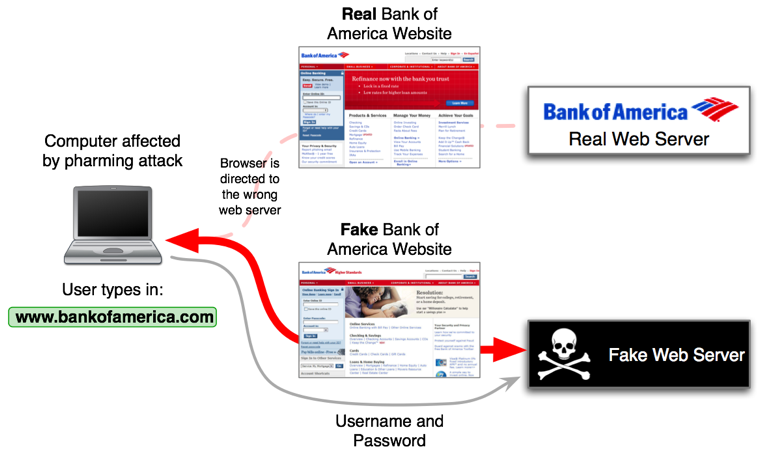
E-Mail Spam
'Spam' is the name given to unsolicited e-mails (ones sent without being asked for).
Spam e-mails usually contain adverts for products...
Spam e-mails usually contain adverts for products...
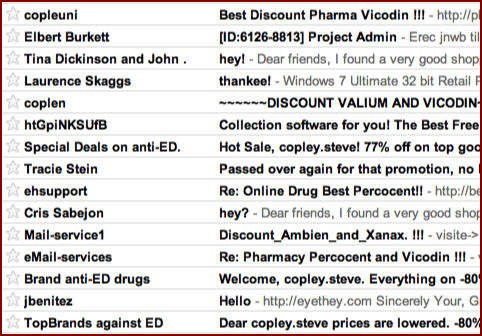
Spam is a huge problem. It is estimated that 97% of all e-mail messages sent is spam. That's several hundred billion spam e-mails every day!
If it wasn't for e-mail spam filters (which separate out spam messages from genuine messages, or 'ham') our e-mail systems would be unusable.
If it wasn't for e-mail spam filters (which separate out spam messages from genuine messages, or 'ham') our e-mail systems would be unusable.
You might wonder who actually responds to spam e-mails, and why the spammers would bother to send them.
The answer is all to do with the massive numbers of spam messages that are sent...
Spammers send billions of messages every day. Even if only 0.01% of people click on the link in a spam message, that still means thousands of links are being clicked. And spammers are paid for every click.
The answer is all to do with the massive numbers of spam messages that are sent...
Spammers send billions of messages every day. Even if only 0.01% of people click on the link in a spam message, that still means thousands of links are being clicked. And spammers are paid for every click.
The origin of the name 'spam' is connected to a Monty Python's Flying Circus comedy sketch from the 1970s.
In the sketch, the only thing to east is spam (a horrible tinned meat product). When your e-mail inbox is full of nothing but marketing e-mails, it seems like it's just 'Spam, spam, spam!'
In the sketch, the only thing to east is spam (a horrible tinned meat product). When your e-mail inbox is full of nothing but marketing e-mails, it seems like it's just 'Spam, spam, spam!'
